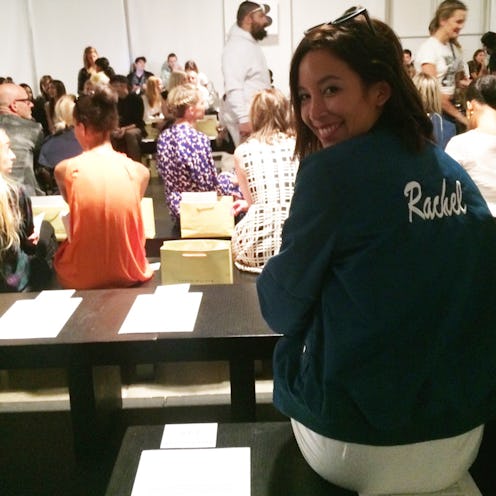At Large: The Evolution Of Fashion Week

At Large is a special-edition series in which Rachel Zoe tasked 3 YouTube stars to attend New York Fashion Week and report back with a story for The Zoe Report. Find out more about the series here.
Rachel Nguyen here! There’s been a lot of talk about New York Fashion Week undergoing many changes in recent years, particularly when it comes to the location of shows, and it was palpable this season. I’ve been attending fashion week since 2010, and with the majority of shows being held at Lincoln Center I had my routine down: Stay at the Hudson Hotel, order table-side guacamole between shows and hop the BD train to the Lower East Side for cocktail hour. When Rachel Zoe sent me to cover this season I was definitely in for a surprise (and a frantic schedule of running all over the city), but the decentralized new structure actually offers new opportunities for designers to showcase their collections on a completely different scale and as a result, has changed fashion week for the better. Here, a closer look at why.
Attending the SS16 shows.
My many years at Lincoln Center started to feel routine. With so many designers showing in the same runway tents we lost the magic of presentation somewhere along the way, mainly because they only had a few hours to build their sets. The lack of one central location now is great because designers have the time to create an immersive experience. In fact, it made me fall in love with fashion week all over again.
At the Karen Walker show.
Without a solid hub for designers to showcase their work, brands suddenly have to get creative with their locations. It’s a new conversation between designers and their audience. Runway or presentation? Brooklyn or Manhattan? On a pier or in a museum? The possibilities are endless.
But what I love most is the new ability to tell a story. From the moment an attendee walks into a venue, the atmosphere, music and clothing all combine to create a vibe. Fashion week should be more than clothes, it’s an opportunity to learn about a brand’s identity. And now more than ever, a designer can create a custom experience to immerse the audience in their world. Now it’s a matter of which brand is savvy enough to evolve with the industry.